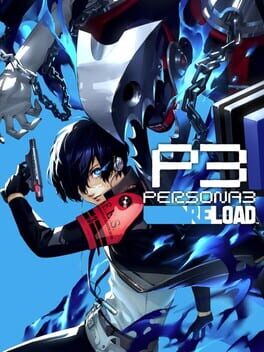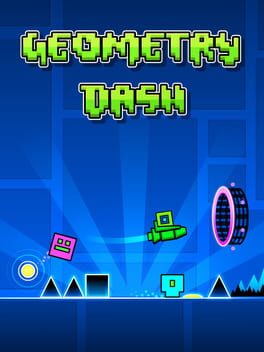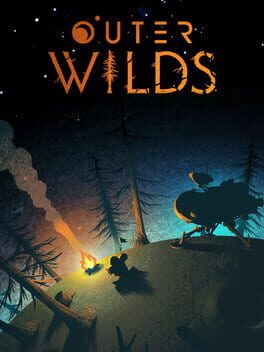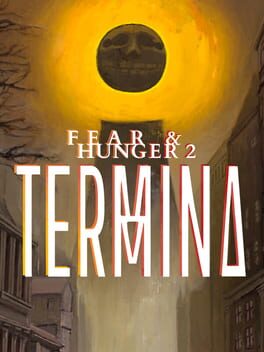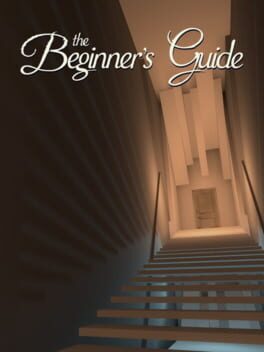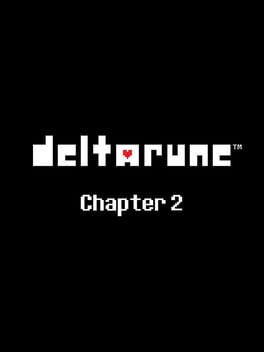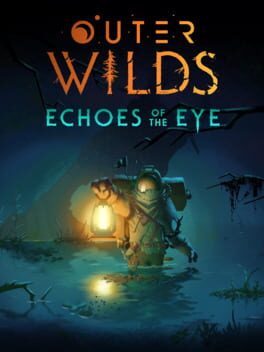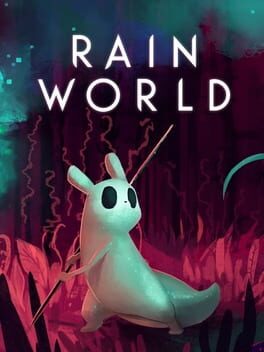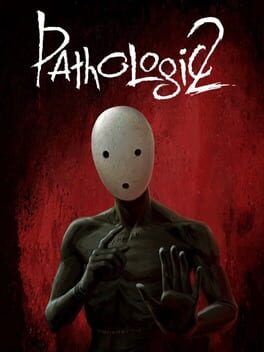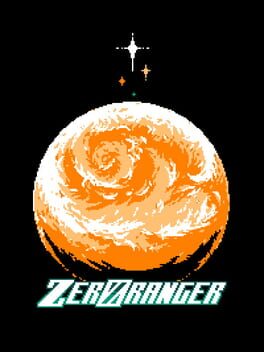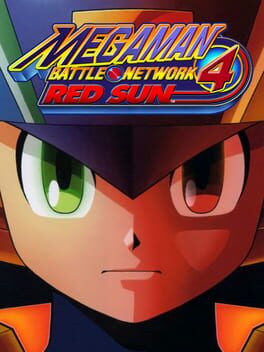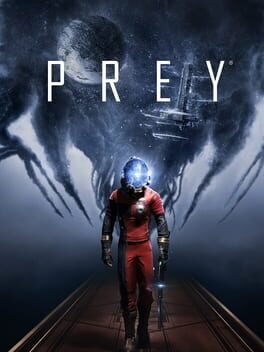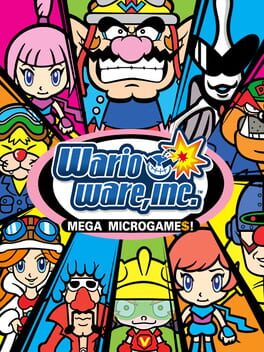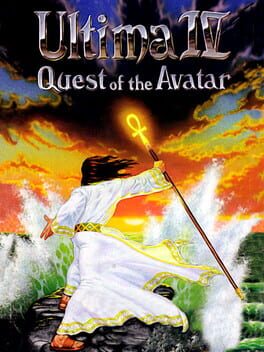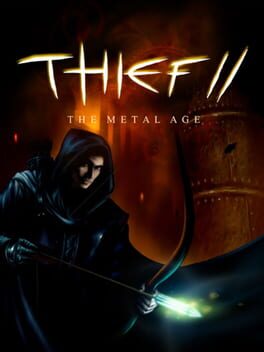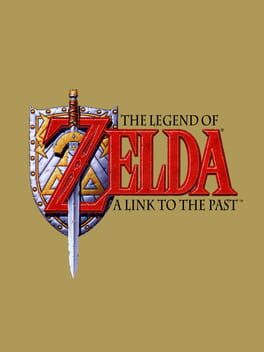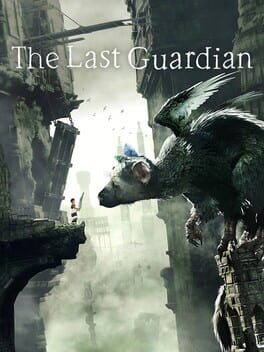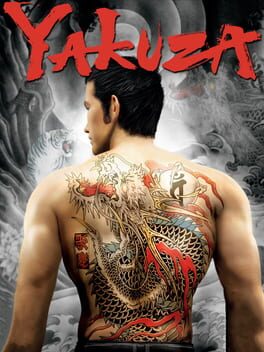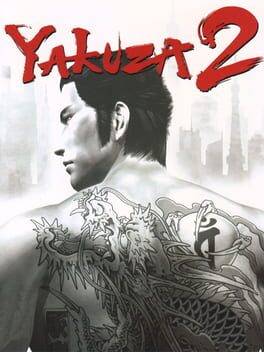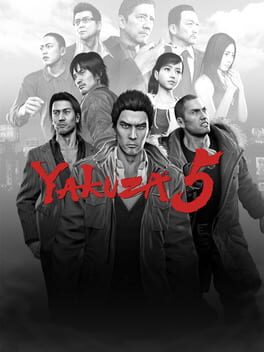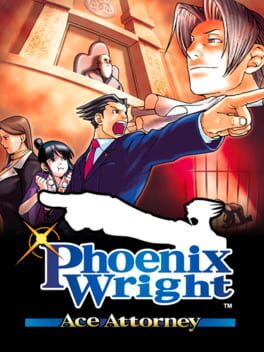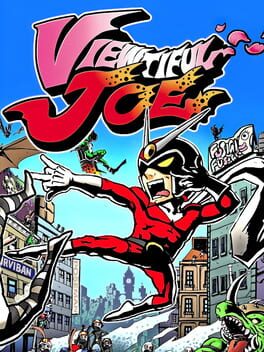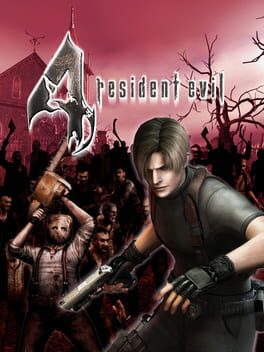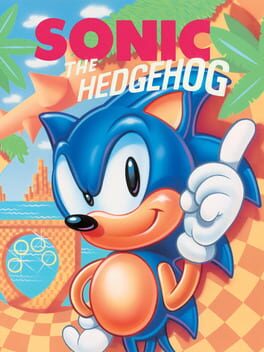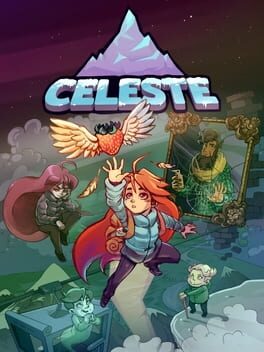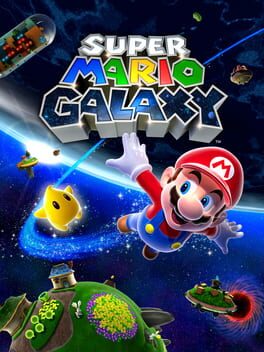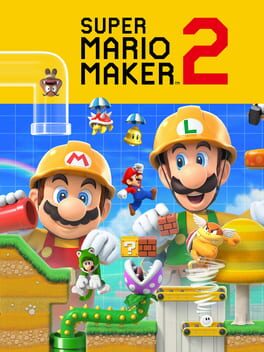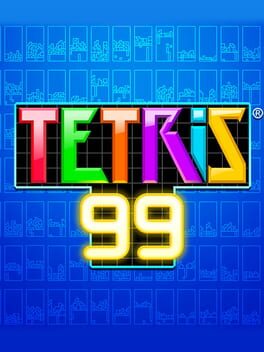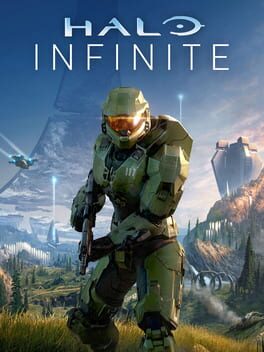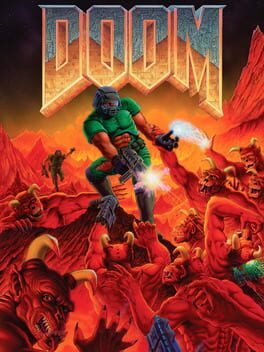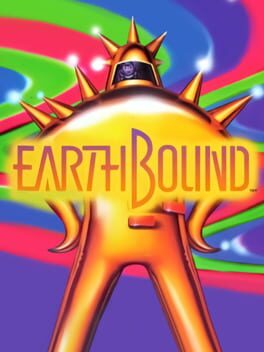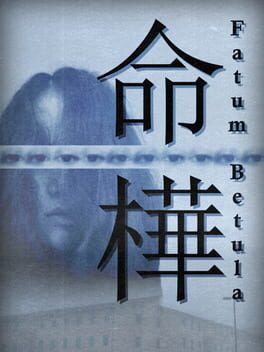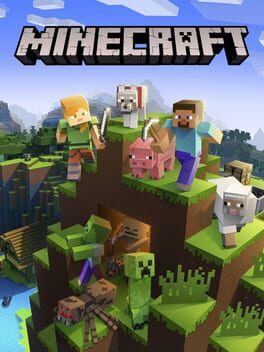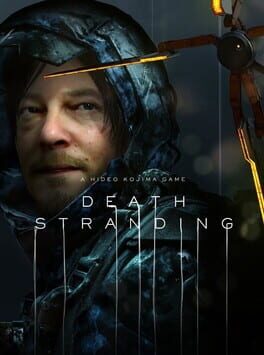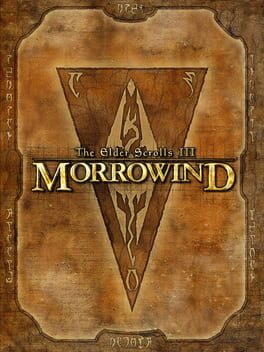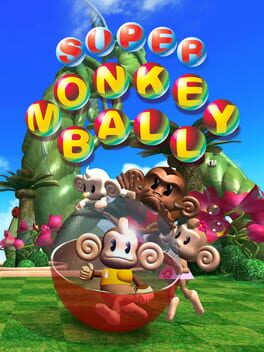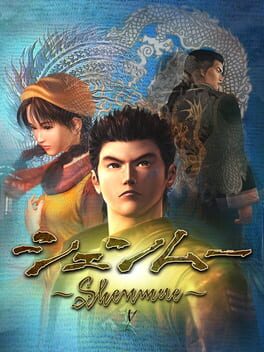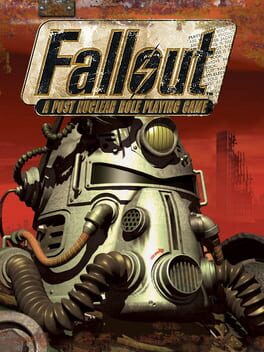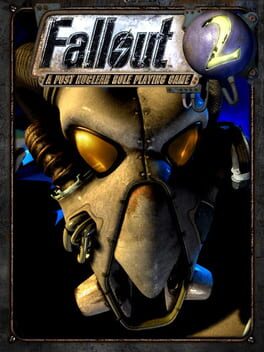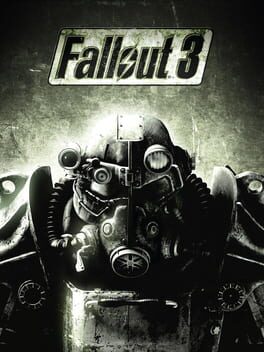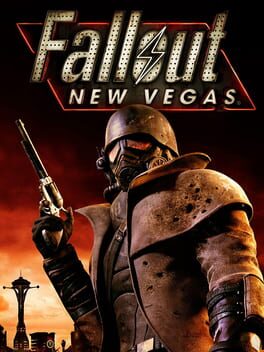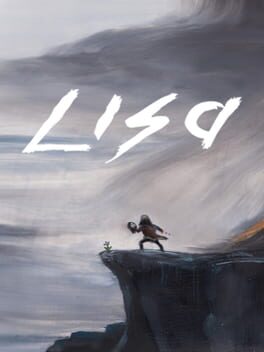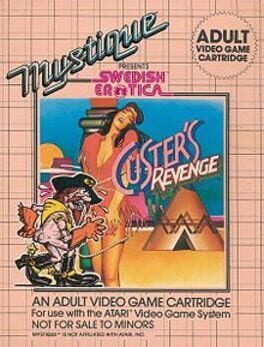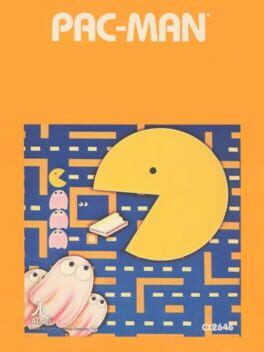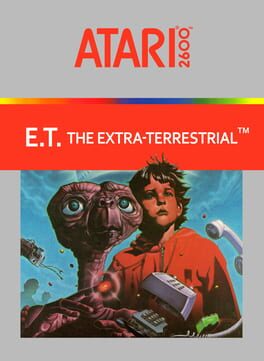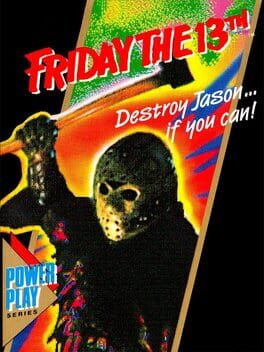baldur
348 reviews liked by baldur
Persona 3 Reload
2024
Geometry Dash
2013
Outer Wilds
2019
This review contains spoilers
There's a lot to discover out there- or, there was, at one point, but it's all been discovered since, hundreds of thousands of years before you even hatched. Games like this can offer recluse from the harsh, pre-explored reality that we live in, so it's disappointing how often Outer Wilds shifts focus away from its naturally occurring astronomical mysteries and towards its ancient alien race that has already solved all of them. It's not about monitoring the cyclones on Giant's Deep and reasoning out that some push and some pull; it's about trying to get into an observatory that houses a model of the phenomenon. It's not about sending out a drone to take pictures of an angler and realizing that its eyes are glazed-over; it's about finding the skeleton in the Sunless City and the accompanying biologists' report that says that they're blind. Of course, you can figure out any of these things on your own, but the 22-minute timer actively discourages the extensive trial-and-error that's necessary to evoke a true feeling of discovery, effectively telling you to try visiting a different planet if you weren't able to make any progress on your last loop. The Nomai are undeniably essential as a way to tie all of the cool space stuff together, and their story is certainly worth telling, but I wish their findings weren't so well-preserved. There's an important distinction between discovering and just plain learning, best illustrated here by the Tower of Quantum Trials, which feels like the tutorial level of a Portal-inspired first-person puzzler rather than a part of a wider world. The gap between what's plainly written out for you (blind fish) and how you can use that information to reach your goal (move slowly) is pretty small, and it's only made smaller by the fact that your ship log neatly summarizes all of the important bits for you. What I crave most from a game like this is the feeling of being stuck, or, more accurately, of overcoming said stuckness, and Outer Wilds just doesn't deliver in that regard, and, as a result, I was never as into it as I would've liked. I kept waiting for it to stonewall me, for that moment where I felt like I'd exhausted every possible avenue, but it never came.
And yet... the game just works anyway. Contrary to how dour that first paragraph reads, I do enjoy learning (albeit less than discovery) especially when it's done this well. Every loop brings a new revelation, and not a single fact about the universe feels forced or out of place. I'd go as far as to say this is the most consistent set of internal logic that I've ever experienced in a video game, and it knows it, considering how much joy it takes in hiding things in plain sight. Of course that fog planet you kept seeing was the quantum moon all along. Of course Ash Twin runs out of sand eventually. Of course the Tower of Quantum Knowledge can get sucked into the black hole. Of course you can't land your ship on the sun station, why do you think it's marked with the same pattern as all of the other warp spots? The amount of mileage it gets out of being a game where you can't interact, only observe (wink, wink, nudge, nudge) is staggering, and what makes many of these world mechanics effective is that they're decidedly un-gamey. Most other games would've let you know in some way when you're being properly shielded by a jellyfish in order to combat I-tried-the-right-solution-but-it-didn't-work-syndrome, but the fact that you don't get any feedback and just unceremoniously pass through the electricity barrier makes it that much more satisfying. It seems like it would be great fun to watch someone else play this game, smirking internally as they walk right past something that you already know is cosmically important, and laughing hysterically as they destroy their ship by ramming headfirst into a planet at 400 m/s. Because it's hard to imagine this game going anywhere without committing to the unforgiving physics of outer space- aside from the ship's autopilot system, arguably, no corners are cut here, culminating in an environment that feels appropriately cutthroat. Get too close to the sun and you're screwed, drift too far from your ship and you're screwed, forget to stop and refuel your jetpack and you're screwed. It's a nice reminder that we as humans (or as Timber Hearthians) have no real way to conceptualize true three-dimensional movement, and, as a result, arriving anywhere safely can often feel like a small miracle, which leads to the game's best moments. Carefully following the gravity crystals to reach the Hanging City for the first time, struggling to land on the quantum moon while simultaneously viewing a picture of it, and, of course, that final trek- replaying the end of loop music during was nothing short of brilliant. I'm much more mixed on that overly artsy indie epilogue, but getting to the Eye at last was the perfect capstone for an experience that deserves its reputation as a universal recommendation... even if my personal solar system wasn't as shattered as many others' were.
And yet... the game just works anyway. Contrary to how dour that first paragraph reads, I do enjoy learning (albeit less than discovery) especially when it's done this well. Every loop brings a new revelation, and not a single fact about the universe feels forced or out of place. I'd go as far as to say this is the most consistent set of internal logic that I've ever experienced in a video game, and it knows it, considering how much joy it takes in hiding things in plain sight. Of course that fog planet you kept seeing was the quantum moon all along. Of course Ash Twin runs out of sand eventually. Of course the Tower of Quantum Knowledge can get sucked into the black hole. Of course you can't land your ship on the sun station, why do you think it's marked with the same pattern as all of the other warp spots? The amount of mileage it gets out of being a game where you can't interact, only observe (wink, wink, nudge, nudge) is staggering, and what makes many of these world mechanics effective is that they're decidedly un-gamey. Most other games would've let you know in some way when you're being properly shielded by a jellyfish in order to combat I-tried-the-right-solution-but-it-didn't-work-syndrome, but the fact that you don't get any feedback and just unceremoniously pass through the electricity barrier makes it that much more satisfying. It seems like it would be great fun to watch someone else play this game, smirking internally as they walk right past something that you already know is cosmically important, and laughing hysterically as they destroy their ship by ramming headfirst into a planet at 400 m/s. Because it's hard to imagine this game going anywhere without committing to the unforgiving physics of outer space- aside from the ship's autopilot system, arguably, no corners are cut here, culminating in an environment that feels appropriately cutthroat. Get too close to the sun and you're screwed, drift too far from your ship and you're screwed, forget to stop and refuel your jetpack and you're screwed. It's a nice reminder that we as humans (or as Timber Hearthians) have no real way to conceptualize true three-dimensional movement, and, as a result, arriving anywhere safely can often feel like a small miracle, which leads to the game's best moments. Carefully following the gravity crystals to reach the Hanging City for the first time, struggling to land on the quantum moon while simultaneously viewing a picture of it, and, of course, that final trek- replaying the end of loop music during was nothing short of brilliant. I'm much more mixed on that overly artsy indie epilogue, but getting to the Eye at last was the perfect capstone for an experience that deserves its reputation as a universal recommendation... even if my personal solar system wasn't as shattered as many others' were.
(I'd like to go on the record as saying that I bought the Fear & Hunger games before the video essayists got to it.)
It's oft said as a maxim, "To steal from one is plagiarism, to steal from many is research". A common thread amongst many retro throwback indie games you see come out is a slavish devotion to a single game, or some dubious rose-tinted era that never really existed. Indie devs who's only real creative aspirations are "What if I made Chrono Trigger again?". Fear & Hunger 2: Termina at a glance could easily be thrown under this umbrella as well: it's plot is a whole-sale reference to Majora's Mask (if you couldn't already tell from the title alone). There's an enemy in-game that's just Art the Clown from Terrifier. Silent Hill, old internet urban legends, H. P. Lovecraft, Hellraiser, the list goes on and on. Termina could easily be filed under this umbrella of unfocused & derivative pop-culture worshipping games, but despite being outwardly familiar, Termina's greatest strength is it's sense of mystique and magic; it's ability to feel like a truly unknowable black box of psychosexual Eurojank horror.
Termina uses its myriad base of familiar inspirations and influences as a jumping-off point, a way to set your expectations before it pulls the wool over your eyes and shows you what it truly wants to accomplish. With a cast of 14 unique characters (8 of which are playable, each with unique ways they affect the core gameplay loop) and a 3 day time limit, there's a sense of wonder as you try (and die) again over and over, with each playable character & NPC having some kind of obscure interaction with other characters or the world that you can stumble upon multiple hours into your 5th or 6th playthrough still. It's structure of a large and relatively static world map, coupled with a downright sadistic and unfair difficulty almost lends Termina the air of a masocore game a la I Want to Be the Guy or Kaizo Mario. It's about venturing head-first into a challenge and getting your ass handed to you in a way so insane and out of left-field you almost laugh at the sheer absurdity of it if you weren't so pissed about your last save being an hour and a half ago.
Saving your game at a bed advances time and causes characters to move around, potentially die, and limit your ability to explore, yet is also the only reliable way to access the game's leveling mechanic to improve your character. Powerful enemies can randomly show up around town and deliver total party wipeouts. While enemy positions and item boxes are static in each playthrough, their appearances and contents are otherwise completely random and up to chance. This risk and reward throughline forces a different approach each playthrough with enough variety that it always feels like you're never truly in control of the situation, no matter how many shotgun shells your carrying around or how many people you have in your party, and it manages to keep up the incredibly tense horror even after you've been desensitized to the horrific monster designs & nightmare scenarios with the constant looming threat of losing progress.
Termina is a dubiously tactful psychosexual nightmare of a game that I can't get enough of. While it will no doubt be picked apart down to its very cogs in the future, I'm enamored by it's mystical black box nature and I hope the future updates this game is planned to recieve flesh it out even more. I can say with confidence that Termina is a cult classic in the making, and a bold new entry into the RPG Maker Horror canon.
It's oft said as a maxim, "To steal from one is plagiarism, to steal from many is research". A common thread amongst many retro throwback indie games you see come out is a slavish devotion to a single game, or some dubious rose-tinted era that never really existed. Indie devs who's only real creative aspirations are "What if I made Chrono Trigger again?". Fear & Hunger 2: Termina at a glance could easily be thrown under this umbrella as well: it's plot is a whole-sale reference to Majora's Mask (if you couldn't already tell from the title alone). There's an enemy in-game that's just Art the Clown from Terrifier. Silent Hill, old internet urban legends, H. P. Lovecraft, Hellraiser, the list goes on and on. Termina could easily be filed under this umbrella of unfocused & derivative pop-culture worshipping games, but despite being outwardly familiar, Termina's greatest strength is it's sense of mystique and magic; it's ability to feel like a truly unknowable black box of psychosexual Eurojank horror.
Termina uses its myriad base of familiar inspirations and influences as a jumping-off point, a way to set your expectations before it pulls the wool over your eyes and shows you what it truly wants to accomplish. With a cast of 14 unique characters (8 of which are playable, each with unique ways they affect the core gameplay loop) and a 3 day time limit, there's a sense of wonder as you try (and die) again over and over, with each playable character & NPC having some kind of obscure interaction with other characters or the world that you can stumble upon multiple hours into your 5th or 6th playthrough still. It's structure of a large and relatively static world map, coupled with a downright sadistic and unfair difficulty almost lends Termina the air of a masocore game a la I Want to Be the Guy or Kaizo Mario. It's about venturing head-first into a challenge and getting your ass handed to you in a way so insane and out of left-field you almost laugh at the sheer absurdity of it if you weren't so pissed about your last save being an hour and a half ago.
Saving your game at a bed advances time and causes characters to move around, potentially die, and limit your ability to explore, yet is also the only reliable way to access the game's leveling mechanic to improve your character. Powerful enemies can randomly show up around town and deliver total party wipeouts. While enemy positions and item boxes are static in each playthrough, their appearances and contents are otherwise completely random and up to chance. This risk and reward throughline forces a different approach each playthrough with enough variety that it always feels like you're never truly in control of the situation, no matter how many shotgun shells your carrying around or how many people you have in your party, and it manages to keep up the incredibly tense horror even after you've been desensitized to the horrific monster designs & nightmare scenarios with the constant looming threat of losing progress.
Termina is a dubiously tactful psychosexual nightmare of a game that I can't get enough of. While it will no doubt be picked apart down to its very cogs in the future, I'm enamored by it's mystical black box nature and I hope the future updates this game is planned to recieve flesh it out even more. I can say with confidence that Termina is a cult classic in the making, and a bold new entry into the RPG Maker Horror canon.
Fear & Hunger
2018
Maybe there’s a decent game in here somewhere, perhaps buried under hours of firing yourself at an immovable brick wall or just bending the knee to wiki guides or YouTubers telling you how good the game eventually gets, but I doubt I’ll ever see it. Maybe it’d be one thing if Fear & Hunger made any attempt to sell any central hook for it’s oppressive world beyond an opening text crawl to lure me along, or present any spark of intrigue in its mechanics for me to want to interface with the game on any meaningful level, but I truly feel like there’s just not a whole lot here for me. Is it possible this is spurred on by preconceptions of the JRPG foundation this game is laid upon? Or maybe it’s just a skill issue and I should get good? Sure, Man. On one hand I gotta respect the level of challenge this game presents, but even a version of F&H with a steadier on-ramp still wouldn’t erase all the nasty set-dressing that’s honestly impossible for me to look past. No censor patch in the world is gonna change the fact that maybe conveying the long-lasting horror of SA through an RPG status effect is in poor taste. I tried, and initially I planned on going back for one more shot, but the more I think about this game the less I fuck with it, so I guess I gotta throw in the towel. If you clicked with this that’s dope and I’m glad you have something you want others to experience, but I felt genuinely kinda gross while playing this and i just wanna move on. Here’s to Fear & Hunger 2, I guess
The Beginner's Guide
2015
This review contains spoilers
Do you guys think wreden and coda ever explored eac[I am shot at point blank range.]
I can see how a lot of people here interpret this as some dumb Blue Curtains Glass Onion shit cus, Y'know, It's the stanley parable guy. But i don't really think that's what it's aiming for. It's more critiquing like that idea that anybody who makes dark or experimental or transgressive art is somebody who is using their art as a call for help. And not just because they find those ideas interesting.
I've been thinking a lot about the late 2000s/mid 2010's indie scene and how different it all feels from the current one. Let's plays don't really feel like a thing anymore? Do people still do those? I mean they still exist but they don't really feel like the kind of cultural force that they use to be. Gone are the times when something like this could be put in front of fucking 12 million people because jacksepticeye played it.
Also i just like some of coda's games as their own weird lil itch io games. My favorite is the cleaning one but i like the messages one a lot too!
This song is really good
I can see how a lot of people here interpret this as some dumb Blue Curtains Glass Onion shit cus, Y'know, It's the stanley parable guy. But i don't really think that's what it's aiming for. It's more critiquing like that idea that anybody who makes dark or experimental or transgressive art is somebody who is using their art as a call for help. And not just because they find those ideas interesting.
I've been thinking a lot about the late 2000s/mid 2010's indie scene and how different it all feels from the current one. Let's plays don't really feel like a thing anymore? Do people still do those? I mean they still exist but they don't really feel like the kind of cultural force that they use to be. Gone are the times when something like this could be put in front of fucking 12 million people because jacksepticeye played it.
Also i just like some of coda's games as their own weird lil itch io games. My favorite is the cleaning one but i like the messages one a lot too!
This song is really good
Deltarune: Chapter 2
2021
This review contains spoilers
It’s early days yet, and Deltarune is far from complete - but no other demo has given me this much content for free, while still enticing with a banquet of utterly intriguing story hooks to speculate on over the coming years. That said, the bulk of this game really just felt like the motions of Undertale on repeat. Toby Fox is a truly multitalented artist, his grasp on how to create vibrant worlds that feel both lived-in and fulfilling to explore is second to none in this industry… but with so many “hallways of funny moments” connecting everything, it can feel like his range is a tad too narrow at times. Subjective af note here but the music just doesn’t bang remotely as hard either.
I must give credit to Chapter 2, specifically the knowledge of the Snowgrave run, for finally lending the improved Undertale combat more of a sense of purpose. Its added layer of party complexity genuinely adds a lot, both mechanically and thematically, and I find it utterly convincing within Deltarune’s metatextual thesis on autonomy, imprisonment and puppeteering. Queen is also the funniest character he’s written yet.
All I’ll really say is that the offering of Deltarune we’ve been given so far suggests far grander things on the horizon, and I’m utterly convinced it will explore them thoroughly. Excited to see where this goes, because if it sticks the landing, it will be very very special.
I must give credit to Chapter 2, specifically the knowledge of the Snowgrave run, for finally lending the improved Undertale combat more of a sense of purpose. Its added layer of party complexity genuinely adds a lot, both mechanically and thematically, and I find it utterly convincing within Deltarune’s metatextual thesis on autonomy, imprisonment and puppeteering. Queen is also the funniest character he’s written yet.
All I’ll really say is that the offering of Deltarune we’ve been given so far suggests far grander things on the horizon, and I’m utterly convinced it will explore them thoroughly. Excited to see where this goes, because if it sticks the landing, it will be very very special.
Deltarune: Chapter 2
2021
Not putting a score on this until all chapters are out but yeah, I loved it! Big step up from chapter 1 presentation wise and you can tell Toby having a team has allowed for much more ambition. Music slaps. Funny and touching writing. What more is there to say!
...well one thing! This game got me thinking about why I find Undertale/Deltarune so uniquely funny. Of course there is the writing/dialogue, which personally I think mostly hits but could also probably be described as "tumblr" if you were being a really uncharitable, cynical douche. I do get it though, when it does miss, it misses in a way where I just kind of go "wow this sure would have killed as a shitpost in 2013 but not sure if it lands here." Thankfully at least to me that doesn't happen often and I think the writing is genuinely both funny and charming.
But I don't think that's what makes these games uniquely funny. That would be that Undertale and Deltarune both are games that manage to weave comedy directly into their game design. If you've seen the "Every Frame a Painting" video essay on Edgar Wright and visual comedy I think a great comparison can be made to what Toby does with these games. Don't just settle for dialogue, if the medium is the message, use the medium to its fullest! How can you get a joke out of an attack pattern? How can you get a joke out of a piece of equipment? How can you get a joke out of experimenting with mechanics? It's something that I actually don't see many "comedy games" attempt much at all beyond maybe a throwaway "You got a Thing!!" jingle + pose because haha funny Zelda reference (not that I have anything against that). Just something I had on the brain after finishing this chapter! Can't wait to see where the game goes next.
...well one thing! This game got me thinking about why I find Undertale/Deltarune so uniquely funny. Of course there is the writing/dialogue, which personally I think mostly hits but could also probably be described as "tumblr" if you were being a really uncharitable, cynical douche. I do get it though, when it does miss, it misses in a way where I just kind of go "wow this sure would have killed as a shitpost in 2013 but not sure if it lands here." Thankfully at least to me that doesn't happen often and I think the writing is genuinely both funny and charming.
But I don't think that's what makes these games uniquely funny. That would be that Undertale and Deltarune both are games that manage to weave comedy directly into their game design. If you've seen the "Every Frame a Painting" video essay on Edgar Wright and visual comedy I think a great comparison can be made to what Toby does with these games. Don't just settle for dialogue, if the medium is the message, use the medium to its fullest! How can you get a joke out of an attack pattern? How can you get a joke out of a piece of equipment? How can you get a joke out of experimenting with mechanics? It's something that I actually don't see many "comedy games" attempt much at all beyond maybe a throwaway "You got a Thing!!" jingle + pose because haha funny Zelda reference (not that I have anything against that). Just something I had on the brain after finishing this chapter! Can't wait to see where the game goes next.
Sniper Elite 4
2017
The following write-up is divided into two parts: a general overview of Echoes of the Eye in relation to Outer Wilds’ base game, and a more spoiler-heavy breakdown of the execution.
Have you ever had that feeling where upon playing through a remake or sequel of a game, you start to question whether or not you liked the original game to begin with?
I’ve been going through this a lot in 2023. Ys: Memories of Celceta comes to mind first; it took me almost an entire year to finally complete it after beating Ys Seven last fall, because despite carrying over the baseline mechanics, the actual pacing of the game felt noticeably different. Then, I went through a similar feeling in the first few hours of Oxenfree II back in October, and despite the similarities to the original, I quickly shelved it and haven't returned since. Finally, this occurred a third time just a few weeks ago with Pokemon Mystery Dungeon: Rescue Team DX, which upon further investigation I found that despite retaining the base structure of the original Blue/Red Rescue team, the remake directly pulled mechanics and inspiration from more recent games in the series, resulting in a system that no longer served its original purpose. Needless to say, it’s a frustrating experience that often requires a lot of scrutiny and soul searching to resolve: did the sequels/remakes change mechanics in ways that felt contrary to the spirit of the originals, or have I just been viewing the originals through rose-tinted glasses this whole time?
This brings us to Echoes of the Eye, my fourth example. In its defense, the cards were already stacked against it; practically every friend I’ve talked to has spoken very positively about how Echoes of the Eye serves as an extension of the base Outer Wilds, and how it greatly enriches the lore of its universe, so it’s hard to see even slight deviations as anything less than a disappointment. Perhaps it is also not entirely fair to lump Echoes of the Eye in with standard sequels and remakes, for Mobius Games was careful to market the DLC as an expansion instead of a separate adventure. I get that this sounds like semantics, but I’d argue that this in itself is representative of Echoes of the Eye’s identity within the game’s scope, or rather, its identity crisis as part of the game’s scope.
In theory, Echoes of the Eye needed to provide an expansion to the game without becoming a “mandatory” part of the experience, since it’s paid DLC released two years after the base game. At the same time though, the expansion also had to fulfill the role of providing a different experience from the base game (otherwise why not just release a free content patch?) while concurrently remaining consistent within the game’s lore and at the very least, capturing the spirit of what made Outer Wilds so compelling. Therein lies the dilemma: how do you make a separate expansion that doesn’t force the player to play the base game prior or coerce/spoil the player in their playthrough of the base game afterwards, while thematically capturing the design philosophy of a game that to me, felt complete?
I realize that it is difficult to discuss the topic at hand without at least explaining how the base game plays into this, so here is my brief (and admittingly, watered-down) summary since I sincerely believe that saying any more would lessen the individual experience. Outer Wilds, to me, is a game about pure discovery. It’s about struggling through life and death, time after time, making sense of something that is so much bigger than you to where it is almost unfathomable to conceptualize. At its core, the mechanics seem fairly simple and concrete; you’ve got a base set of tools and controls that never need to evolve, because much of the game is dictated by the individual circumstances around you in exploiting the set rules of the planetary system to progress further. Internalizing Outer Wilds’ baseline structure and governing mechanics and making the connections between discoveries and mysteries is every bit as key as the execution itself, and as a result, what seems to be this astronomical conundrum stemming from this vast universe becomes seemingly more manageable with each new revelation until the player puts all the pieces together to bring the tale to its close.
Unfortunately, this is not how Echoes of the Eye operates whatsoever.
Spoilers for both base Outer Wilds and Echoes of the Eye will be covered beyond this point.
BeachEpisode brings up a fundamental point in their review that I'd like to expand upon: despite separate planets and areas in Outer Wilds operating under different conditions, the universe nevertheless remains mechanically consistent because at their core, the same set of underlying systems and mechanics never changes. For example, once you learn the three rules of quantum mechanics in base Outer Wilds, you can exploit these same rules regardless of what planet you are on to manipulate quantum objects; capturing a moving quantum object with a photograph will always work on said quantum object regardless of what the quantum object is or the system it exists within. As a result, Outer Wilds also has the benefit of not having a set progression path. I like to imagine the game as a vast series of tunnels intersecting one another at various junctions; it’s super easy to jump back and forth between systems at one’s own will with no negative consequences whatsoever, and regardless of the starting point or route taken, anyone can play through the game and discover all of the content, inevitably coming to the same conclusions.
Meanwhile, Echoes of the Eye takes place almost entirely in one location, dubbed “The Stranger.” My best guess is that Mobius Games chose to isolate and contain all of the expansion’s content in one hub as to prevent players from accidentally stumbling upon the DLC’s side story, though it is still theoretically possible to unintentionally discover the strange black void in the sky without ever following the intended path of following radio tower interference to lead into the expansion, much like I did in my own base game playthrough. Already, you can see the conceptual conflicts; the player isn’t going to know that the Stranger is separate from the base game’s ending until they check their ship logs specifically demarcating the DLC from the base game, but the more troubling issue is the artificiality of creating an intended path with only one real trigger/clue for the Stranger. Either way, it puts the presence of the DLC in an awkward place.
Furthermore, centralizing the DLC around one set location makes exploration in the expansion much more deliberate. This doesn’t inherently sound like a negative at first, but again, consider this in relation to the base game. As implied above, one understated strength is that clues are spread across the entire system and can often be linked to other outlying clues in completely different locations, which encourages the player to more thoroughly explore around the planetary system while lessening burnout from getting walled by the same mysteries in certain locations. The player can simply switch tasks yet continually progress despite doing so. What makes this particularly grating when translated to Echoes of the Eye is that despite all the DLC content being present in the Stranger, the game is still completely connected to the base game and thus will always spawn you back at Timber Hearth even if you die/lapse within the DLC. It makes complete sense for the game to utilize Timber Hearth as a respawn in the base game, but it presents a real lack of quality-of-life issue during an Echoes of the Eye run when the player has to fly back to the Stranger over and over again during the beginning of each time loop, making death feel far more punishing.
This disconnect from the main planetary system becomes even more apparent thanks to the game’s baseline mechanics feeling very underutilized in the exploration of the Stranger. For instance, the Signalscope (used to detect radio wave sources) isn’t used a single time. The aforementioned quantum mechanic laws are also absent, most likely because knowledge of such laws would require you to have played the base game. The ship’s log, used for keeping track of rumors and connecting locations, does at least take note of discoveries in the Stranger, but its presence feels minimal because there’s no space travel involved once you’ve docked in the Stranger’s hangar and actively going back to the docked hangar to check rumors in the middle of runs becomes a huge commitment when considering the one-directional flowing river in the way. Even the time loop itself becomes a detriment. In the base game, the time loop simply makes environments different to navigate, rather than strictly more difficult; for example, Brittle Hollow slowly falls apart over time into a black hole, while the Ash and Ember twins swap sand volumes like an hourglass. That’s not really the case for Echoes of the Eye: the main event dictated by the time loop is the destruction of dam causing the river to overflow, which aside from a couple of key differences from extinguishing some campfire flames, mostly just makes the river more difficult to navigate by flooding the environment with stronger currents.
Here's where another key wrinkle comes into play: the player is unable to translate the alien language of the Stranger’s inhabitants (for reasons I can’t completely explain due to excess spoilers but thematically fit into the series’ lore), and as such, most of the Stranger’s narrative is told via slides that are manually viewed from a projector. I have mixed feelings here. On one hand, the art is beautifully drawn to quickly explain concepts and lore. On the other hand, this is indicative of Echoes of the Eye’s progression feeling fairly linear; the loop then becomes exploring around areas to find reels that hint you upon how to explore other areas for more reels, and instead of making the discoveries for yourself, the gameplay becomes an elaborate exercise of just following illustrated instructions really well. At least the base game left plenty of ambiguity from other forms of given context clues (such as Nomai translations and character dialogue) creating vague hints of what to follow up upon, but the reels often quite literally display exact solutions of what to do in particular scenarios (i.e. look in this direction during this specific part of the raft path to teleport to a new area), which can leave players feeling like they didn’t need to do much extrapolating and thus rob them of the thrill of discovery. Again, this isn’t necessary a pressing issue in isolation, but when compared to the open-ended problems that the base game loved to present, Echoes of the Eye’s reels leave something to be desired.
And then, there’s the dream world, which basically exacerbates every issue I’ve described above and adds some more to boot. The separate areas of the dream world eschew many of the governing laws that dictate the base game and the Stranger’s overworlds (so you won’t be able to use your jetpack/flashlight/scout launcher/etc), and instead force the player to adhere to exclusive mechanics present only in the dream world, such as the teleporting hands and the wooden totems that can extinguish/illuminate distant light sources. Much of these areas are enveloped in this blanketing darkness where you can’t see more than a few feet in front of you, unless you make the conscious decision to focus your lantern’s light and slow your movement to a crawl. Navigation of these areas is annoying enough as is, but they become even more troublesome thanks to these roaming owls that upon spotting you in the light, will immediately dash towards you and extinguish your lantern, waking you up and forcing another reentry with more backtracking. Oddly, while the slide reels at least give you the hint on where to go for objectives, they don’t give context regarding the owls, which means that avoiding detection more or less comes down to memorizing their routes via trial and error and shutting off your lantern so you can tip-toe around them in total darkness. At that point, the forced stealth-horror sections fail to spark any enthusiasm; the in-your-face scary monsters aren’t scary anymore when you’re just getting caught over and over trying to sneak past, and the learning curve feels far more punishing than difficult thanks to the time loop cutting your experimentation short before you’ve got to redo the whole shebang and reacquire the lantern/get back to the campfire entry to try again.
I’ve been fairly critical of Echoes of the Eye so far, but I can at least concede that within the DLC, the mechanics feel internally consistent and serve their situations well. The light/dark mechanics used to steer the raft, open doors, and display reels capture the expansion’s theme really well and match the player’s expectations (i.e. you’re shining your flashlight onto poles on the raft to steer, and it makes sense that you’d want to steer in the direction you’re looking in), which led to one particular light puzzle utilizing the scout launcher that I really appreciated. Exploration feels a bit tempered, partially because of the reels often spelling too much out and partially because using the jetpack feels risky when the flowing current can send you careening down the river, but at least the player usually isn’t lost or confused despite often not having the ship’s log within reach.
Sadly, I find it difficult to extend that same courtesy to the dream world. Aside from the tedious forced-stealth, some of the puzzles feel outright unintuitive, while others feel undercooked. For instance, one area requires you to tail hostile owls to figure out the location of a hidden stairway into an archive. However, the game has been instinctively signaling to you this entire time that the owls should be avoided entirely, especially when they can quickly spot and hunt you down as soon as they notice your light source. Why then, does the game expect you to completely invert this learning for one particular puzzle? Similarly, there are several instances in another area where the player is expected to walk between seeming gaps in mid-air using candles to mark invisible bridges. It’s not until you’ve accessed the area’s vault that you find out that those invisible bridges can be spotted all along by placing your lantern on the floor and walking a certain distance away to “reveal” the simulation and display the invisible bridges. Again, it’s a cool concept, but certainly it would have made more sense to learn the exploit before the puzzles instead of presenting it in a reel afterwards like some sort of revelation that’s not quite as useful anymore.
Many of the game’s discrepancies troubled me greatly at this time, so I decided to hunt down a primary source to better understand what was going through the dev team’s minds after completing the game a few hours later. It should then come as no surprise that many of the differences between Outer Wilds and Echoes of the Eye are a result of the DLC requiring a different design philosophy out of necessity because the base game already existed. Co-designer Alex Beachum describes Echoes of the Eye’s design philosophy in an interview as essentially the reverse approach to base Outer Wilds. While Outer Wilds was designed with story organically arising from gameplay possibilities, Echoes of the Eye had to implement the gameplay with preestablished premises in mind, building locations around the story. This then, explains the rigidity of the game’s overworld progress in phases (find the Stranger -> explore around the river -> explore the dream world -> solve the case) and hints towards why the designers settled upon reels as the solution for explaining lore and guiding players towards the intended routes of discovery.
There’s also evidence which suggests that scope creep was a pressing concern during Echoes of the Eye's development. Beachum mentions during that same interview that there were originally three worlds to be designed within the Stranger: a light world, a dark world, and a dream/simulated world. Originally, the pitch was that the Stranger was to operate on a day-night cycle, and that the big twist was that the light and dark world were really two sides of the same coin, using an elevator to flip you to the other side. The dream world essentially existed as a “matrix” where the ghosts manifesting in the overworld were plugged in. Eventually, this idea had to be greatly simplified when the designers realized it was far too much work to implement all three worlds at once. Nevertheless, it’s an interesting thought experiment considering how these three worlds would operate differently, and perhaps the distinct mechanics present in the dream world would not feel nearly as jarring if it operated as a transition world between the light and dark environments.
Finally, the interview confirmed that as a result of the game’s linearity, the development team had to deliberately scale back certain elements that they feared would lead to accidental findings outright skipping entire sections of the game. Essentially, the designers believed it made no intentional sense for the civilization to store away the “answers” to the security system. Instead, they hoped to make the final revelations of exploiting glitches in the system feel like deliberately timed discoveries. For example, Mobius Games increased the steepness of the angle at which the player has to tilt their camera to place down the lantern, so accidentally finding out about the virtual world from walking away from the lantern became much more difficult.
That more than anything, illustrates what I think is the main point of friction between the base game and Echoes of the Eye. Despite having strict solutions per hand-crafted puzzle, Outer Wilds felt like a game firmly within the player’s control thanks to its open-ended structure. By no means was it focused upon emergent gameplay, but the ability to turn accidental discoveries into tangible threads was nevertheless greatly appreciated and really made me feel like I was doing the brunt of the work. Echoes of the Eye on the other hand, is a game that had to be much more carefully scripted as to not take away from both its internal runtime and the larger overall mystery from which it stemmed from. The fact that Mobius Games had to intentionally limit the available possibilities by removing utility and filled up much of its planned runtime with forced stealth that felt like banging my head against the wall speaks to a much more visible artificiality (quite literally, in this case) present within the deliberately constrained and separated areas of the DLC.
The conclusion at least, brings Echoes of the Eye down to earth. After exploiting the simulation with the glitches that you learned about in the dream world vaults, you finally get to meet the lone survivor and learn more about what happened from their perspective. It’s a shame that the exploits are used exactly once and all at once instead of incrementally throughout explorations of the virtual world, but I can respect an ending that quickly comes to a natural close and serves as a succinct foil to the much more illustrious finale of the base game. The story is not quite complete yet though, because then it becomes time to share your side as the prisoner hands over the vision staff. It would not be an exaggeration to claim that this moment is perhaps the most satisfying catharsis in the entire game’s runtime. Such a simple act as becoming the storyteller yourself, coupled with the developer’s care to alter the specific pictured events depending on what your character has witnessed in the base game prior to opening the vault, really brings the whole piece together. I may have my gripes with the expansion’s conceptualization with respect to the base game, but I am certainly glad that it ended on such a memorable final message that only serves to bolster the sum of its parts.
All things considered, I think that Echoes of the Eye could have been a damn good game if it was entirely self-contained. I did feel that the light-dark mechanics were thoroughly explored within the scope of its environments, and if the game were uncoupled from the base game as to provide simple quality of life updates like a spawn point within the Stranger or a portable version of the ship-log to access at any time, I think the expansion would have been far less frustrating. Hell, if the time loop was removed entirely and I had more time to thoroughly explore the dream world without time constraints, I could definitely see myself attempting to patiently manipulate the AI for a more tense experience rather than simply bum-rushing each forced stealth section. In isolation, I think Echoes of the Eye’s mechanics and overall message are mostly thematically consistent and sound.
Major spoilers end here.
At the end of the day though, that’s exactly the core problem. Outer Wilds is a game about connection. It’s about making sense of subtle clues here and there and linking all the details together to process this overwhelming sensation of confronting something that’s so much more than you could have ever imagined. Echoes of the Eye is supposed to be an expansion that doesn't require prior knowledge of Outer Wilds, yet this linkage to the base game is both its greatest strength and its greatest weakness. Without the base game as a reference point, its final message would not have such lasting impact, but as a result of being an expansion, it’s forever stuck playing second fiddle to something that was already so conceptually realized while feeling drastically different from its already established conventions.
Echoes of the Eye is the best DLC that never needed to exist. That’s simultaneously a knock on the DLC and praise for Outer Wilds itself, as it’s quite difficult to evaluate Echoes of the Eye on its own merits for better or for worse. Perhaps it could have been something more if it didn’t need to live in the shadow of something greater, but what purpose would it have served otherwise? It’s hard to think of any obvious and practical improvements when it feels like conceptually, Mobius Digital may have written themselves into a corner. I'm relieved that my love for the original game was not unfounded, though it's still a bummer at the end of the day that its artistic vision didn't translate too well into its expansion. As such, while I’m glad to have experienced Echoes of the Eye, I’m just as glad to have finally made some sense of this all and have seen this behemoth of modern indie games to its natural conclusion.
Have you ever had that feeling where upon playing through a remake or sequel of a game, you start to question whether or not you liked the original game to begin with?
I’ve been going through this a lot in 2023. Ys: Memories of Celceta comes to mind first; it took me almost an entire year to finally complete it after beating Ys Seven last fall, because despite carrying over the baseline mechanics, the actual pacing of the game felt noticeably different. Then, I went through a similar feeling in the first few hours of Oxenfree II back in October, and despite the similarities to the original, I quickly shelved it and haven't returned since. Finally, this occurred a third time just a few weeks ago with Pokemon Mystery Dungeon: Rescue Team DX, which upon further investigation I found that despite retaining the base structure of the original Blue/Red Rescue team, the remake directly pulled mechanics and inspiration from more recent games in the series, resulting in a system that no longer served its original purpose. Needless to say, it’s a frustrating experience that often requires a lot of scrutiny and soul searching to resolve: did the sequels/remakes change mechanics in ways that felt contrary to the spirit of the originals, or have I just been viewing the originals through rose-tinted glasses this whole time?
This brings us to Echoes of the Eye, my fourth example. In its defense, the cards were already stacked against it; practically every friend I’ve talked to has spoken very positively about how Echoes of the Eye serves as an extension of the base Outer Wilds, and how it greatly enriches the lore of its universe, so it’s hard to see even slight deviations as anything less than a disappointment. Perhaps it is also not entirely fair to lump Echoes of the Eye in with standard sequels and remakes, for Mobius Games was careful to market the DLC as an expansion instead of a separate adventure. I get that this sounds like semantics, but I’d argue that this in itself is representative of Echoes of the Eye’s identity within the game’s scope, or rather, its identity crisis as part of the game’s scope.
In theory, Echoes of the Eye needed to provide an expansion to the game without becoming a “mandatory” part of the experience, since it’s paid DLC released two years after the base game. At the same time though, the expansion also had to fulfill the role of providing a different experience from the base game (otherwise why not just release a free content patch?) while concurrently remaining consistent within the game’s lore and at the very least, capturing the spirit of what made Outer Wilds so compelling. Therein lies the dilemma: how do you make a separate expansion that doesn’t force the player to play the base game prior or coerce/spoil the player in their playthrough of the base game afterwards, while thematically capturing the design philosophy of a game that to me, felt complete?
I realize that it is difficult to discuss the topic at hand without at least explaining how the base game plays into this, so here is my brief (and admittingly, watered-down) summary since I sincerely believe that saying any more would lessen the individual experience. Outer Wilds, to me, is a game about pure discovery. It’s about struggling through life and death, time after time, making sense of something that is so much bigger than you to where it is almost unfathomable to conceptualize. At its core, the mechanics seem fairly simple and concrete; you’ve got a base set of tools and controls that never need to evolve, because much of the game is dictated by the individual circumstances around you in exploiting the set rules of the planetary system to progress further. Internalizing Outer Wilds’ baseline structure and governing mechanics and making the connections between discoveries and mysteries is every bit as key as the execution itself, and as a result, what seems to be this astronomical conundrum stemming from this vast universe becomes seemingly more manageable with each new revelation until the player puts all the pieces together to bring the tale to its close.
Unfortunately, this is not how Echoes of the Eye operates whatsoever.
Spoilers for both base Outer Wilds and Echoes of the Eye will be covered beyond this point.
BeachEpisode brings up a fundamental point in their review that I'd like to expand upon: despite separate planets and areas in Outer Wilds operating under different conditions, the universe nevertheless remains mechanically consistent because at their core, the same set of underlying systems and mechanics never changes. For example, once you learn the three rules of quantum mechanics in base Outer Wilds, you can exploit these same rules regardless of what planet you are on to manipulate quantum objects; capturing a moving quantum object with a photograph will always work on said quantum object regardless of what the quantum object is or the system it exists within. As a result, Outer Wilds also has the benefit of not having a set progression path. I like to imagine the game as a vast series of tunnels intersecting one another at various junctions; it’s super easy to jump back and forth between systems at one’s own will with no negative consequences whatsoever, and regardless of the starting point or route taken, anyone can play through the game and discover all of the content, inevitably coming to the same conclusions.
Meanwhile, Echoes of the Eye takes place almost entirely in one location, dubbed “The Stranger.” My best guess is that Mobius Games chose to isolate and contain all of the expansion’s content in one hub as to prevent players from accidentally stumbling upon the DLC’s side story, though it is still theoretically possible to unintentionally discover the strange black void in the sky without ever following the intended path of following radio tower interference to lead into the expansion, much like I did in my own base game playthrough. Already, you can see the conceptual conflicts; the player isn’t going to know that the Stranger is separate from the base game’s ending until they check their ship logs specifically demarcating the DLC from the base game, but the more troubling issue is the artificiality of creating an intended path with only one real trigger/clue for the Stranger. Either way, it puts the presence of the DLC in an awkward place.
Furthermore, centralizing the DLC around one set location makes exploration in the expansion much more deliberate. This doesn’t inherently sound like a negative at first, but again, consider this in relation to the base game. As implied above, one understated strength is that clues are spread across the entire system and can often be linked to other outlying clues in completely different locations, which encourages the player to more thoroughly explore around the planetary system while lessening burnout from getting walled by the same mysteries in certain locations. The player can simply switch tasks yet continually progress despite doing so. What makes this particularly grating when translated to Echoes of the Eye is that despite all the DLC content being present in the Stranger, the game is still completely connected to the base game and thus will always spawn you back at Timber Hearth even if you die/lapse within the DLC. It makes complete sense for the game to utilize Timber Hearth as a respawn in the base game, but it presents a real lack of quality-of-life issue during an Echoes of the Eye run when the player has to fly back to the Stranger over and over again during the beginning of each time loop, making death feel far more punishing.
This disconnect from the main planetary system becomes even more apparent thanks to the game’s baseline mechanics feeling very underutilized in the exploration of the Stranger. For instance, the Signalscope (used to detect radio wave sources) isn’t used a single time. The aforementioned quantum mechanic laws are also absent, most likely because knowledge of such laws would require you to have played the base game. The ship’s log, used for keeping track of rumors and connecting locations, does at least take note of discoveries in the Stranger, but its presence feels minimal because there’s no space travel involved once you’ve docked in the Stranger’s hangar and actively going back to the docked hangar to check rumors in the middle of runs becomes a huge commitment when considering the one-directional flowing river in the way. Even the time loop itself becomes a detriment. In the base game, the time loop simply makes environments different to navigate, rather than strictly more difficult; for example, Brittle Hollow slowly falls apart over time into a black hole, while the Ash and Ember twins swap sand volumes like an hourglass. That’s not really the case for Echoes of the Eye: the main event dictated by the time loop is the destruction of dam causing the river to overflow, which aside from a couple of key differences from extinguishing some campfire flames, mostly just makes the river more difficult to navigate by flooding the environment with stronger currents.
Here's where another key wrinkle comes into play: the player is unable to translate the alien language of the Stranger’s inhabitants (for reasons I can’t completely explain due to excess spoilers but thematically fit into the series’ lore), and as such, most of the Stranger’s narrative is told via slides that are manually viewed from a projector. I have mixed feelings here. On one hand, the art is beautifully drawn to quickly explain concepts and lore. On the other hand, this is indicative of Echoes of the Eye’s progression feeling fairly linear; the loop then becomes exploring around areas to find reels that hint you upon how to explore other areas for more reels, and instead of making the discoveries for yourself, the gameplay becomes an elaborate exercise of just following illustrated instructions really well. At least the base game left plenty of ambiguity from other forms of given context clues (such as Nomai translations and character dialogue) creating vague hints of what to follow up upon, but the reels often quite literally display exact solutions of what to do in particular scenarios (i.e. look in this direction during this specific part of the raft path to teleport to a new area), which can leave players feeling like they didn’t need to do much extrapolating and thus rob them of the thrill of discovery. Again, this isn’t necessary a pressing issue in isolation, but when compared to the open-ended problems that the base game loved to present, Echoes of the Eye’s reels leave something to be desired.
And then, there’s the dream world, which basically exacerbates every issue I’ve described above and adds some more to boot. The separate areas of the dream world eschew many of the governing laws that dictate the base game and the Stranger’s overworlds (so you won’t be able to use your jetpack/flashlight/scout launcher/etc), and instead force the player to adhere to exclusive mechanics present only in the dream world, such as the teleporting hands and the wooden totems that can extinguish/illuminate distant light sources. Much of these areas are enveloped in this blanketing darkness where you can’t see more than a few feet in front of you, unless you make the conscious decision to focus your lantern’s light and slow your movement to a crawl. Navigation of these areas is annoying enough as is, but they become even more troublesome thanks to these roaming owls that upon spotting you in the light, will immediately dash towards you and extinguish your lantern, waking you up and forcing another reentry with more backtracking. Oddly, while the slide reels at least give you the hint on where to go for objectives, they don’t give context regarding the owls, which means that avoiding detection more or less comes down to memorizing their routes via trial and error and shutting off your lantern so you can tip-toe around them in total darkness. At that point, the forced stealth-horror sections fail to spark any enthusiasm; the in-your-face scary monsters aren’t scary anymore when you’re just getting caught over and over trying to sneak past, and the learning curve feels far more punishing than difficult thanks to the time loop cutting your experimentation short before you’ve got to redo the whole shebang and reacquire the lantern/get back to the campfire entry to try again.
I’ve been fairly critical of Echoes of the Eye so far, but I can at least concede that within the DLC, the mechanics feel internally consistent and serve their situations well. The light/dark mechanics used to steer the raft, open doors, and display reels capture the expansion’s theme really well and match the player’s expectations (i.e. you’re shining your flashlight onto poles on the raft to steer, and it makes sense that you’d want to steer in the direction you’re looking in), which led to one particular light puzzle utilizing the scout launcher that I really appreciated. Exploration feels a bit tempered, partially because of the reels often spelling too much out and partially because using the jetpack feels risky when the flowing current can send you careening down the river, but at least the player usually isn’t lost or confused despite often not having the ship’s log within reach.
Sadly, I find it difficult to extend that same courtesy to the dream world. Aside from the tedious forced-stealth, some of the puzzles feel outright unintuitive, while others feel undercooked. For instance, one area requires you to tail hostile owls to figure out the location of a hidden stairway into an archive. However, the game has been instinctively signaling to you this entire time that the owls should be avoided entirely, especially when they can quickly spot and hunt you down as soon as they notice your light source. Why then, does the game expect you to completely invert this learning for one particular puzzle? Similarly, there are several instances in another area where the player is expected to walk between seeming gaps in mid-air using candles to mark invisible bridges. It’s not until you’ve accessed the area’s vault that you find out that those invisible bridges can be spotted all along by placing your lantern on the floor and walking a certain distance away to “reveal” the simulation and display the invisible bridges. Again, it’s a cool concept, but certainly it would have made more sense to learn the exploit before the puzzles instead of presenting it in a reel afterwards like some sort of revelation that’s not quite as useful anymore.
Many of the game’s discrepancies troubled me greatly at this time, so I decided to hunt down a primary source to better understand what was going through the dev team’s minds after completing the game a few hours later. It should then come as no surprise that many of the differences between Outer Wilds and Echoes of the Eye are a result of the DLC requiring a different design philosophy out of necessity because the base game already existed. Co-designer Alex Beachum describes Echoes of the Eye’s design philosophy in an interview as essentially the reverse approach to base Outer Wilds. While Outer Wilds was designed with story organically arising from gameplay possibilities, Echoes of the Eye had to implement the gameplay with preestablished premises in mind, building locations around the story. This then, explains the rigidity of the game’s overworld progress in phases (find the Stranger -> explore around the river -> explore the dream world -> solve the case) and hints towards why the designers settled upon reels as the solution for explaining lore and guiding players towards the intended routes of discovery.
There’s also evidence which suggests that scope creep was a pressing concern during Echoes of the Eye's development. Beachum mentions during that same interview that there were originally three worlds to be designed within the Stranger: a light world, a dark world, and a dream/simulated world. Originally, the pitch was that the Stranger was to operate on a day-night cycle, and that the big twist was that the light and dark world were really two sides of the same coin, using an elevator to flip you to the other side. The dream world essentially existed as a “matrix” where the ghosts manifesting in the overworld were plugged in. Eventually, this idea had to be greatly simplified when the designers realized it was far too much work to implement all three worlds at once. Nevertheless, it’s an interesting thought experiment considering how these three worlds would operate differently, and perhaps the distinct mechanics present in the dream world would not feel nearly as jarring if it operated as a transition world between the light and dark environments.
Finally, the interview confirmed that as a result of the game’s linearity, the development team had to deliberately scale back certain elements that they feared would lead to accidental findings outright skipping entire sections of the game. Essentially, the designers believed it made no intentional sense for the civilization to store away the “answers” to the security system. Instead, they hoped to make the final revelations of exploiting glitches in the system feel like deliberately timed discoveries. For example, Mobius Games increased the steepness of the angle at which the player has to tilt their camera to place down the lantern, so accidentally finding out about the virtual world from walking away from the lantern became much more difficult.
That more than anything, illustrates what I think is the main point of friction between the base game and Echoes of the Eye. Despite having strict solutions per hand-crafted puzzle, Outer Wilds felt like a game firmly within the player’s control thanks to its open-ended structure. By no means was it focused upon emergent gameplay, but the ability to turn accidental discoveries into tangible threads was nevertheless greatly appreciated and really made me feel like I was doing the brunt of the work. Echoes of the Eye on the other hand, is a game that had to be much more carefully scripted as to not take away from both its internal runtime and the larger overall mystery from which it stemmed from. The fact that Mobius Games had to intentionally limit the available possibilities by removing utility and filled up much of its planned runtime with forced stealth that felt like banging my head against the wall speaks to a much more visible artificiality (quite literally, in this case) present within the deliberately constrained and separated areas of the DLC.
The conclusion at least, brings Echoes of the Eye down to earth. After exploiting the simulation with the glitches that you learned about in the dream world vaults, you finally get to meet the lone survivor and learn more about what happened from their perspective. It’s a shame that the exploits are used exactly once and all at once instead of incrementally throughout explorations of the virtual world, but I can respect an ending that quickly comes to a natural close and serves as a succinct foil to the much more illustrious finale of the base game. The story is not quite complete yet though, because then it becomes time to share your side as the prisoner hands over the vision staff. It would not be an exaggeration to claim that this moment is perhaps the most satisfying catharsis in the entire game’s runtime. Such a simple act as becoming the storyteller yourself, coupled with the developer’s care to alter the specific pictured events depending on what your character has witnessed in the base game prior to opening the vault, really brings the whole piece together. I may have my gripes with the expansion’s conceptualization with respect to the base game, but I am certainly glad that it ended on such a memorable final message that only serves to bolster the sum of its parts.
All things considered, I think that Echoes of the Eye could have been a damn good game if it was entirely self-contained. I did feel that the light-dark mechanics were thoroughly explored within the scope of its environments, and if the game were uncoupled from the base game as to provide simple quality of life updates like a spawn point within the Stranger or a portable version of the ship-log to access at any time, I think the expansion would have been far less frustrating. Hell, if the time loop was removed entirely and I had more time to thoroughly explore the dream world without time constraints, I could definitely see myself attempting to patiently manipulate the AI for a more tense experience rather than simply bum-rushing each forced stealth section. In isolation, I think Echoes of the Eye’s mechanics and overall message are mostly thematically consistent and sound.
Major spoilers end here.
At the end of the day though, that’s exactly the core problem. Outer Wilds is a game about connection. It’s about making sense of subtle clues here and there and linking all the details together to process this overwhelming sensation of confronting something that’s so much more than you could have ever imagined. Echoes of the Eye is supposed to be an expansion that doesn't require prior knowledge of Outer Wilds, yet this linkage to the base game is both its greatest strength and its greatest weakness. Without the base game as a reference point, its final message would not have such lasting impact, but as a result of being an expansion, it’s forever stuck playing second fiddle to something that was already so conceptually realized while feeling drastically different from its already established conventions.
Echoes of the Eye is the best DLC that never needed to exist. That’s simultaneously a knock on the DLC and praise for Outer Wilds itself, as it’s quite difficult to evaluate Echoes of the Eye on its own merits for better or for worse. Perhaps it could have been something more if it didn’t need to live in the shadow of something greater, but what purpose would it have served otherwise? It’s hard to think of any obvious and practical improvements when it feels like conceptually, Mobius Digital may have written themselves into a corner. I'm relieved that my love for the original game was not unfounded, though it's still a bummer at the end of the day that its artistic vision didn't translate too well into its expansion. As such, while I’m glad to have experienced Echoes of the Eye, I’m just as glad to have finally made some sense of this all and have seen this behemoth of modern indie games to its natural conclusion.
